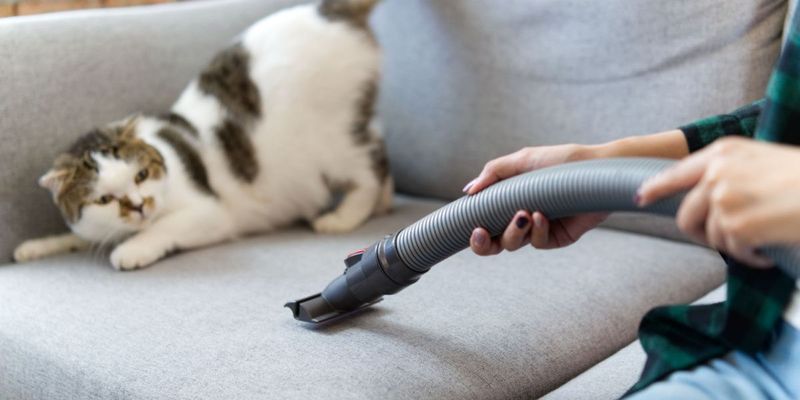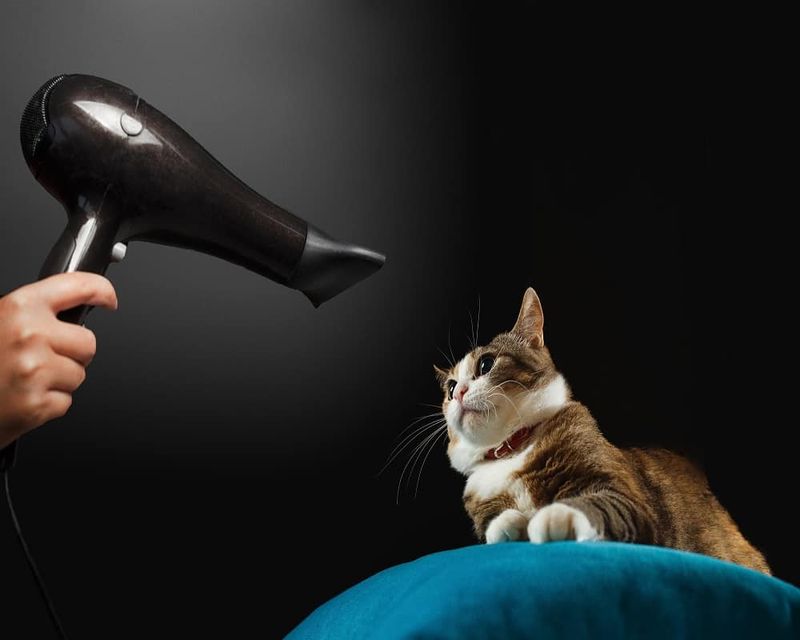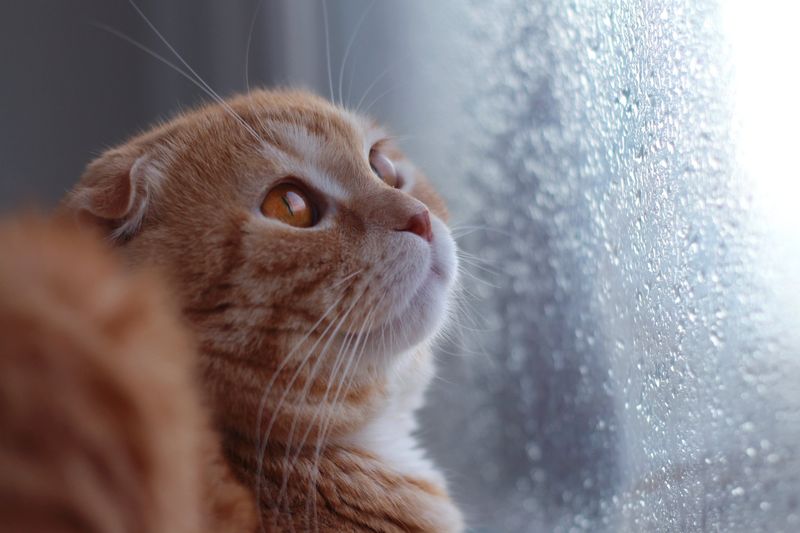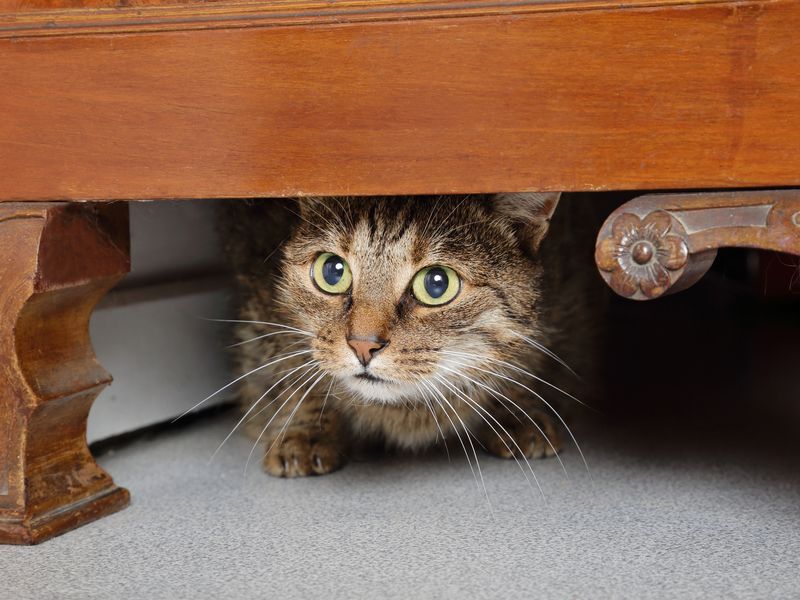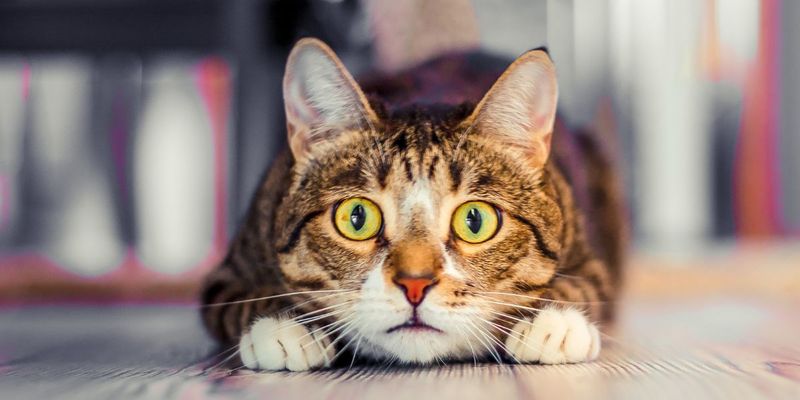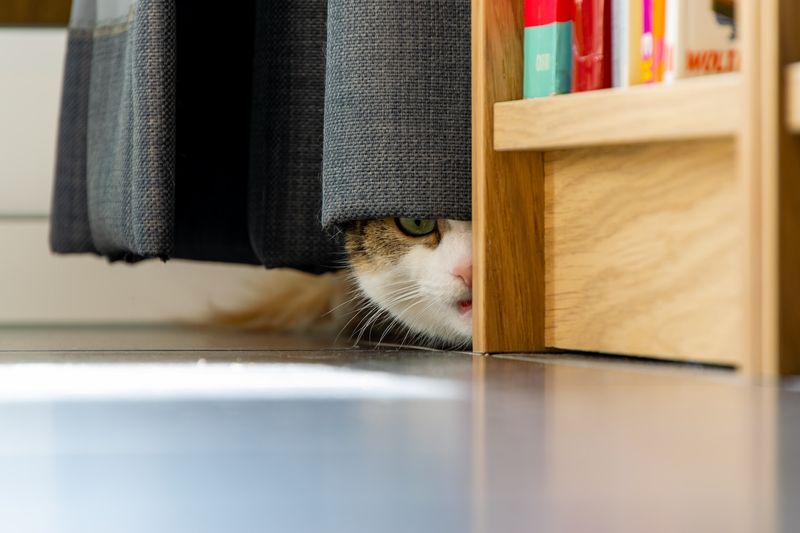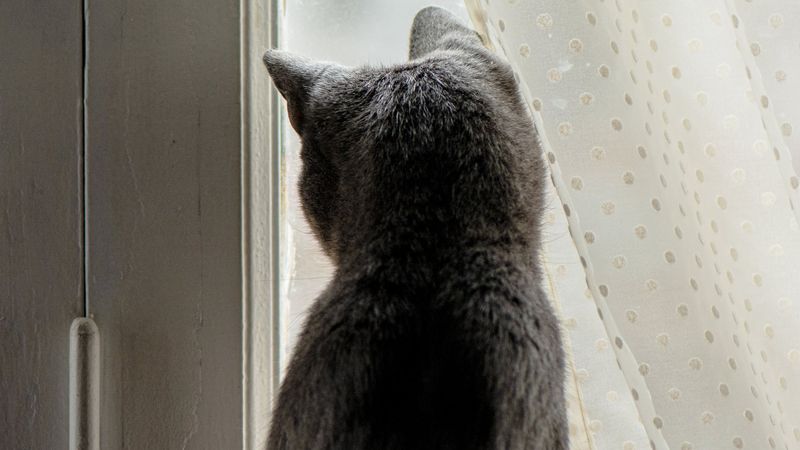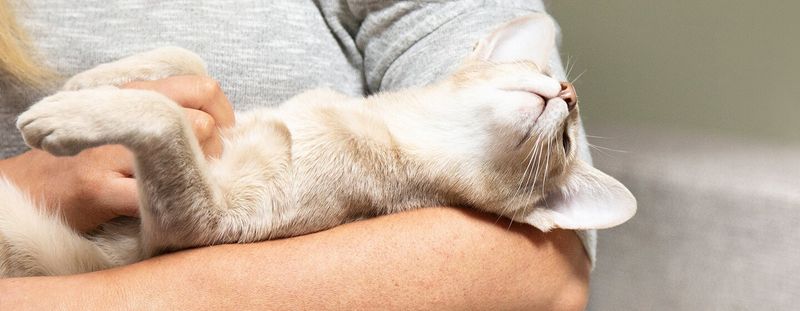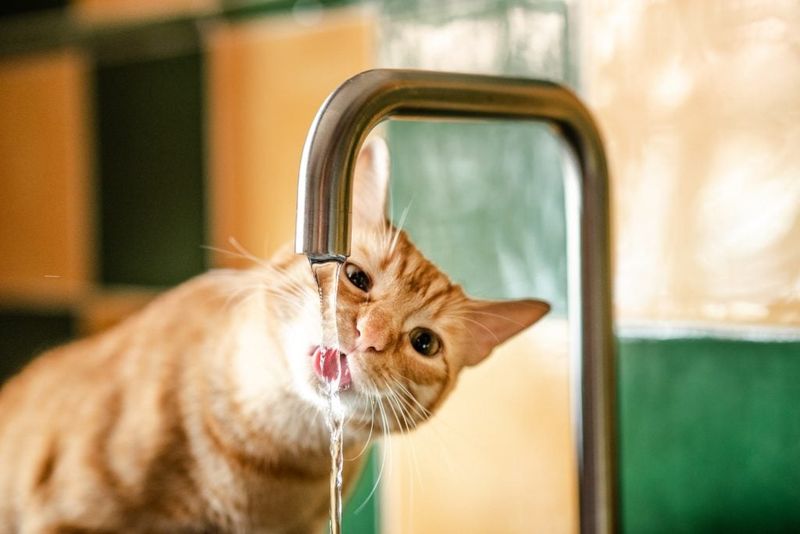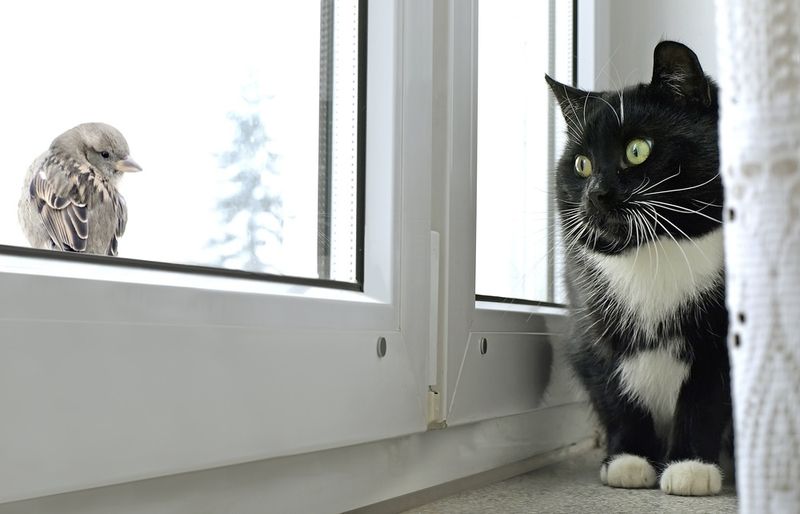📖 Table of Content:
- 1. Vacuum Cleaners
- 2. Hair Dryers
- 3. Thunderstorms
- 4. Fireworks
- 5. Loud Music or TV
- 6. Yelling or Arguing
- 7. Clanging Pots and Pans
- 8. Alarms
- 9. Construction Noises
- 10. Doorbells or Knocking
- 1. Soft Classical or Ambient Music
- 2. Purring Sounds
- 3. Running Water
- 4. Bird Chirping
- 5. Your Calm, Soothing Voice
Cats are known for their sharp senses and instinct-driven behaviors, but many people don’t realize just how sensitive their hearing truly is. While felines can be calm and collected on the surface, certain everyday sounds can send them into full-on panic mode or at the very least, make them uncomfortable. Whether it’s a vacuum roaring to life or an unexpected knock at the door, these seemingly normal noises might be disrupting your cat’s sense of peace.
Because a cat’s hearing is far more acute than a human’s, noises that seem mildly annoying to us can be unbearable to them. Their ears are finely tuned to pick up high-frequency sounds and subtle vibrations—traits that helped them hunt in the wild but now leave them vulnerable to stress in modern homes. Understanding what triggers their discomfort is a key part of being a responsible and empathetic pet parent.
But it’s not all bad news—just as some sounds can irritate, others can calm and even delight your feline friend. From the rhythmic splash of running water to the soothing purr of a fellow cat, some noises create a sense of comfort and security. In this guide, we’ll explore 10 common sounds that cats tend to hate and 5 that they often find soothing. Knowing the difference can help you create a more harmonious space for your furry companion.
1. Vacuum Cleaners
It only takes a sudden roar from the vacuum to send many cats scrambling for safety. That loud, mechanical hum mixed with jerky movements mimics a predator in their minds. No matter how often they’re exposed to it, most felines never quite get used to it. The unpredictability of when it will start adds to the anxiety. For some, just seeing the vacuum come out of the closet is enough to vanish from sight. Many owners report their cats hiding under beds or in closets during cleaning sessions. Using quieter models or cleaning while the cat is in another room may help. A bit of planning can reduce these unpleasant episodes significantly.
2. Hair Dryers
Few things make cats bolt faster than the shriek of a hair dryer turning on nearby. The hot gusts of air combined with the piercing whirring sound create the perfect storm of discomfort. Despite its everyday use for humans, it can feel invasive and threatening to a cat’s sensitive ears. They often associate it with bath time or being restrained, both of which add to the stress. Even when not directed at them, the sound alone can cause visible tension. It’s a reminder that what seems mundane to us can feel alarming to pets. Allowing your cat to leave the area when drying hair can ease the pressure. For grooming, alternatives like towel drying may be gentler.
3. Thunderstorms
Thunderstorms bring a cacophony of unpredictable sounds, flashing lights, and low-frequency booms. These elements signal danger in nature, triggering deep-seated instincts to seek shelter. Some cats may stay hidden for hours until calm returns. The atmospheric pressure shift might also contribute to their anxiety. While we enjoy watching storms roll in, our pets may be quietly suffering. Creating a safe, enclosed retreat can offer comfort during these loud episodes. Playing white noise or soft music can also help muffle the unsettling sounds.
4. Fireworks
Celebrations involving fireworks may be fun for humans but often feel like a battlefield to cats. The loud, erratic bangs and whizzes offer no warning and no clear source. It’s this lack of pattern and escape that amplifies their fear. Many cats react with intense panic—running, panting, or cowering in confined spaces. The buildup and repetition during holidays can raise stress to dangerous levels. While we admire the show, cats just want it to end. Reducing outdoor exposure and staying by their side during big displays can help soothe them. A cozy, sound-dampened room may be their best sanctuary.
5. Loud Music or TV
Cranking up the stereo or turning on an action-packed movie might be your way to unwind, but your cat could be dreading it. Music with thumping bass and TV sounds like gunshots or sirens hit their ultra-sensitive ears hard. Cats are drawn to consistent, gentle rhythms—not sudden volume spikes or harsh tones. You might not even notice how often they flee when entertainment gets loud. Over time, this can lead to general tension and a reluctance to hang out in shared spaces. Many cats prefer peaceful backgrounds and soft conversation. Turning the volume down a few notches can make a big difference. You’ll notice a calmer, more present feline companion as a result.
6. Yelling or Arguing
Nothing sets a cat on edge faster than hearing raised human voices in their environment. When arguments or yelling occur, they can’t comprehend the context—they only sense the discord. Emotional tones matter more than words to animals, and harsh vocal energy is stressful. You may notice their body language shift: flattened ears, crouched postures, or retreating behaviors. Even if the shouting isn’t directed at them, they feel the household tension. Long-term exposure can lead to trust issues or anxiety-based behaviors. Lowering your voice and maintaining calm can build a more stable home atmosphere. Over time, they’ll feel safer expressing themselves around you.
7. Clanging Pots and Pans
In the middle of dinner prep, that clatter of pots and pans may seem harmless, but your cat probably disagrees. Sharp metallic sounds create sudden spikes in their auditory world. These echoes are loud, abrupt, and often too close for comfort. It’s not uncommon for cats to leave the kitchen entirely during noisy meal-making. They may associate the kitchen with discomfort and even avoid it when it’s quiet. Using soft silicone mats or being conscious of how you handle utensils can ease this stress. Some cats are more tolerant, but many flinch at dropped items or stacked metal. A little awareness goes a long way in preserving their comfort zone.
8. Alarms
High-pitched alerts—like smoke detectors or phone alarms—are especially disturbing to cats. Built to grab human attention fast, they can be nearly unbearable for feline ears. The intensity of the tone can cause cats to bolt in fear or freeze in confusion. Even a brief beep from a low-battery warning may unsettle them. Prolonged exposure can leave them wary of certain rooms or areas. Minimizing alarm testing around cats or switching to quieter notifications can help. When emergencies occur, try to relocate your pet to a quieter zone quickly. And afterward, offer comfort and reassurance to restore their sense of safety.
9. Construction Noises
Renovations or nearby construction may not seem like a big deal to you, but for a cat, it can feel like the world is falling apart. The hammering, drilling, and sawing are intense, irregular, and completely outside their control. These disruptive frequencies often cause hiding, lack of appetite, or skittishness. Even if the construction is outdoors, vibrations and loud bursts can still carry inside. It erodes their sense of territory and routine. For indoor cats especially, this noise pollution can feel inescapable. Try isolating them in a quiet room with soothing sounds to help buffer the chaos. It won’t cancel the noise entirely, but it provides some much-needed relief.
10. Doorbells or Knocking
Without warning, the doorbell rings or a knock resounds, and your cat disappears like a magician. These abrupt noises often mean someone unfamiliar is entering their space. The combination of loudness and the unknown sets off alarm bells in a cat’s head. Some even associate it with past stress—like vet visits or overwhelming guests. With no time to prepare, they react purely on instinct. You can ease this tension by desensitizing them gradually with softer chimes or positive associations. Let them observe from a distance if they choose. The more they feel in control, the less they’ll fear these sudden disruptions.
1. Soft Classical or Ambient Music
There’s something almost magical about the effect gentle classical music has on a relaxed feline. Unlike loud, erratic tunes, these soft melodies create a consistent, calming background that many cats seem to appreciate. It’s not just anecdotal—studies show slow tempos and simple instruments can reduce feline stress. You might find your cat curling up in a sunbeam or nodding off when the right playlist is on. This makes classical or ambient music a useful tool during storms, vet visits, or recovery from illness. Don’t be surprised if your cat gravitates toward the speaker like it’s a warm fire. Experimenting with cat-specific music can lead to even better results. Just be sure to keep the volume low and soothing.
2. Purring Sounds
At times, all it takes is the low, rhythmic hum of a purr to melt away your cat’s tension. Whether coming from another cat, a recording, or a calming toy, the sound of purring creates a feeling of safety. It’s thought to promote healing and emotional bonding, functioning like a natural sedative. Many cats respond to it instinctively, softening their posture and leaning into the moment. For kittens especially, purring mimics the security of being near their mother. When used intentionally, it can be part of creating a calm bedtime routine or easing separation anxiety. You may even notice your cat begins to purr in response. That mutual vibration can deepen your bond in quiet, comforting ways.
3. Running Water
This sound mimics natural streams, which not only attract their attention but also appeal to their instinct for clean, moving sources. Many cats prefer water fountains over still bowls for this very reason. Not only does it encourage hydration, but it offers a tranquil ambiance in the home. You’ll often see them sitting and staring at faucets or fountains, ears perked and eyes half-closed in focus. Some even dip their paws in as part of a calming, playful ritual. The gentle splash becomes part of their sensory landscape. Consider adding a fountain to your space if your cat seems drawn to water.
4. Bird Chirping
When birds chirp just outside the window—or even from a recording—cats become entranced rather than distressed. The high-pitched, natural tones spark their attention in a way that feels energizing but not overwhelming. It’s different from threatening or sudden noise; it taps into their playful, predatory side. This is why window-watching is such a beloved activity, often paired with gentle tail flicks and quiet coos. Bird sounds can enrich their environment without introducing chaos. Some indoor cats enjoy bird song playlists as background “TV,” creating a little mental vacation. Just be mindful it doesn’t lead to frustrated hunting behaviors. As enrichment, though, it can be a beautiful way to connect with their instincts.
5. Your Calm, Soothing Voice
Sometimes, your own voice is all your cat needs to feel grounded and safe. Speaking in soft, steady tones—especially during moments of stress—can help them regulate and calm down. Even though they don’t understand every word, they’re attuned to tone, cadence, and emotional energy. Cats learn to recognize the voices of the people they trust, responding with purring, blinking, or simply staying nearby. Whispering, humming, or gently narrating your actions can transform grooming or vet visits into bonding time. When practiced regularly, your voice becomes their emotional anchor in a noisy world. This simple act of calm communication carries deep power. It’s proof that trust often grows in the quietest moments.

